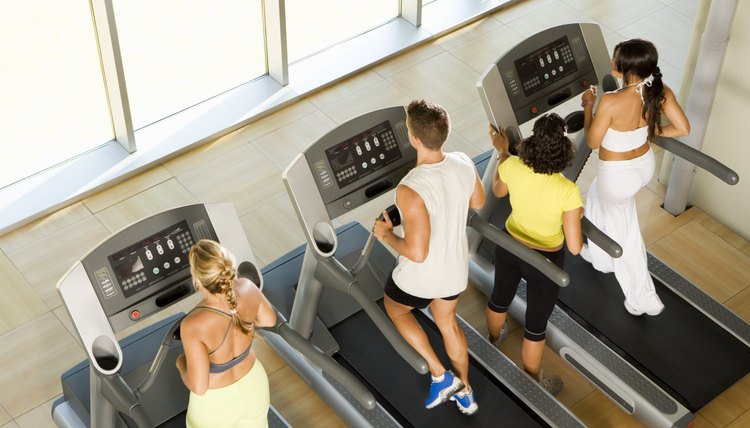What does fact checked mean?
At SportsRec, we strive to deliver objective content that is accurate and up-to-date. Our team periodically reviews articles in order to ensure content quality. The sources cited below consist of evidence from peer-reviewed journals, prominent medical organizations, academic associations, and government data.
The information contained on this site is for informational purposes only, and should not be used as a substitute for the advice of a professional health care provider. Please check with the appropriate physician regarding health questions and concerns. Although we strive to deliver accurate and up-to-date information, no guarantee to that effect is made.
Elliptical vs. Treadmill vs. Bike

There’s no one best way of exercising, unless it’s the one that you enjoy most because you’re more likely to keep doing it regularly. Even the biggest calorie-burning cardio machine is useless if you aren’t willing to use it. So instead of following so-called expert recommendations about whether you should use elliptical machines, treadmills or stationary bikes, compare their relative merits and decide for yourself based on your fitness goals. Here's the main differences between the treadmill vs bike vs elliptical.
Calories Burned
Harvard Health Publications ranks vigorous stationary biking as one of the most efficient calorie-burning exercises in the gym, at a whopping 466 calories in 30 minutes if you weigh 185 pounds. A general elliptical trainer workout will burn slightly fewer calories, 400 in half an hour, while running or walking on a treadmill can smash both of these numbers if you go fast enough. You’d have to run at a steady 5.2 mph to match the elliptical calorie burn, or 6 mph to match vigorous cycling. Which makes the treadmill perfect for weight loss and fat burning.
Muscles Worked
While these types of exercise equipment are mainly a cardio workout, they also build muscle strength in addition to its cardiovascular benefits. Among elliptical trainers, treadmills and bikes, elliptical trainers are the only machines that regularly offer an option for an upper body workout. Moving handlebars let you swing your arms against resistance as you pedal, working the muscle groups in your chest, back and arms. On very rare occasions, you may find a bike with moving handlebars too; this is known as a dual-action bike. Otherwise, bikes provide a lower body workout of your glutes, quads, hip flexors and hamstrings with minimal assistance from your calf muscles, while treadmills work leg muscles like your glutes, quads, hip flexors, hamstrings and calves.
Features
You can expect a fairly standard range of features on elliptical trainers, treadmills and bikes, whether the machine is in a gym setting or intended for home use. These include push-button electronic resistance levels or speed adjustments, MP3 player-compatible audio jacks, built-in console fans, customizable or virtual reality exercise programs led by personal trainers and digital readouts that display basic information such as calories burned, distance and speed. Some even come prepackaged with a built in heart rate monitor to measure how high intensity your workout is.
Impact
Cycling and pedaling an elliptical trainer are both forms of low-impact exercise. Low-impact exercises are those in which both feet never leave the ground or pedals at the same time, thus there’s less pounding on your joints. Such exercises are beneficial if you have joint issues, knee pain or back problems. However, high-impact exercises like walking, jogging and sprinting are more helpful than low-impact exercises for improving bone health. So if you’re looking for weight-bearing exercise machines to combat osteoporosis, a treadmill is more effective than a bike or elliptical trainer.
Considerations
Of the three machines, you can purchase a low-end aerobic bike for less than a low-end elliptical trainer or treadmill. Once you hit the $1,000 range, you should be able to get an exercise bike similar to what you’ll find in the gym, although a well-built entry-level treadmill or elliptical trainer can be had for the same price. Either way, adding one to your fitness routine could be very helpful.
Writer Bio
Lisa Maloney is a travel and outdoors writer based in Anchorage, Alaska. She's written four outdoors and travel guidebooks, including the award-winning "Moon Alaska," and regularly contributes to local and national publications. She also has a background in personal training, with more than 6,000 hours of hands-on experience.